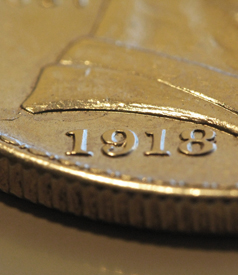When it comes to taxes on capital gains, the emperor suddenly has no clothes. He’s been stripped bare, in bipartisan fashion, by the co-chairs of President Obama’s fiscal commission.
The chairs are Republican Alan K. Simpson and Erskine Bowles, a Democrat. Their initial report included a call for equal taxes on capital gains, dividends and ordinary income such as wages. This upends the current tax code, and it contradicts almost the entire history of capital gains taxes in America.
Implicitly, it also rejects the K Street claim that tax breaks for capital gains grow jobs, grow businesses and grow the economy. If the claim had any truth, Messrs. Simpson and Bowles would never support equal taxes on all income as a way to help cut the national deficit.
Liberals instinctively attacked the right-leaning aspects of the report. House Speaker Nancy Pelosi, in full “no” mode, labeled its recommendations “simply unacceptable.” Not quite, Madam Speaker; apropos investment income, Simpson/Bowles is a Democratic dream come true.
Income from wealth and income from work were taxed at the same rate in only two widely-separated times in America – from 1916-21, and after Ronald Reagan’s Tax Reform Act of 1986. President Clinton restored the tax break on capital gains in 1997, cutting the rate on long-term gains from Reagan’s 28 percent to 20 percent. Six years later, President Bush lowered the levy to 15 percent and did likewise for dividends. The Bush cuts were written to expire in 2010, but it’s not certain they will. Even if they did, the capital gains rate would still be less than the rate on middle-class wages.
The Simpson/Bowles recommendations could die a quick death: a unified final report needs the votes of 14 out of the commission’s 18 members, comprised of nine from each party. If a super-majority of 14 can agree, their report arrives at the White House on December 1.
But the proposals are now on the table, so the genie is out of the bottle. President Obama and Congress were already facing a showdown on extending the Bush tax cuts. Now, in addition, Congress and the administration have a rare opportunity to set a new course for the nation’s fiscal future.
They could start by revisiting the tax code and creating capital gains tax breaks that really would grow jobs and stimulate the economy. Small companies with big dreams raise seed money through initial public offerings (IPOs) and secondary offerings; larger companies sometimes do the same (e.g., the resurgent GM). In a move that would give a built-in boost to the market for new issues, capital gains on these investments could accrue tax-free. Interest on corporate bonds, now taxed as ordinary income, also deserves a tax break. Corporate bonds raise the money to build corporate infrastructure, much like municipal bonds raise money to build local infrastructure. Interest from municipal bonds gets tax breaks; why not corporate interest?
How to pay for these new tax breaks? Easy: the money would come from ending the unproductive tax break on stock market gains, along with the 2003 tax break on dividends.
In 1986, President Reagan essentially traded tax breaks on capital gains for another round of cuts in the marginal rates. A generation later, the initial draft from Obama’s fiscal commission holds the makings of a similar endgame.
One major milestone has already been reached. The notion that investments deserve a lower tax than wages has been vaporized. The emperor has no clothes, and really never did.
A week after the Simpson/Bowles report, the Bipartisan Policy Center weighed in with its own deficit reduction plan. It differed in many ways, but it too recommended equal taxes on capital gains and ordinary income.
Join us in defending the truth before it’s too late
The future of independent journalism is uncertain, and the consequences of losing it are too grave to ignore. To ensure Truthout remains safe, strong, and free, we need to raise $43,000 in the next 6 days. Every dollar raised goes directly toward the costs of producing news you can trust.
Please give what you can — because by supporting us with a tax-deductible donation, you’re not just preserving a source of news, you’re helping to safeguard what’s left of our democracy.
